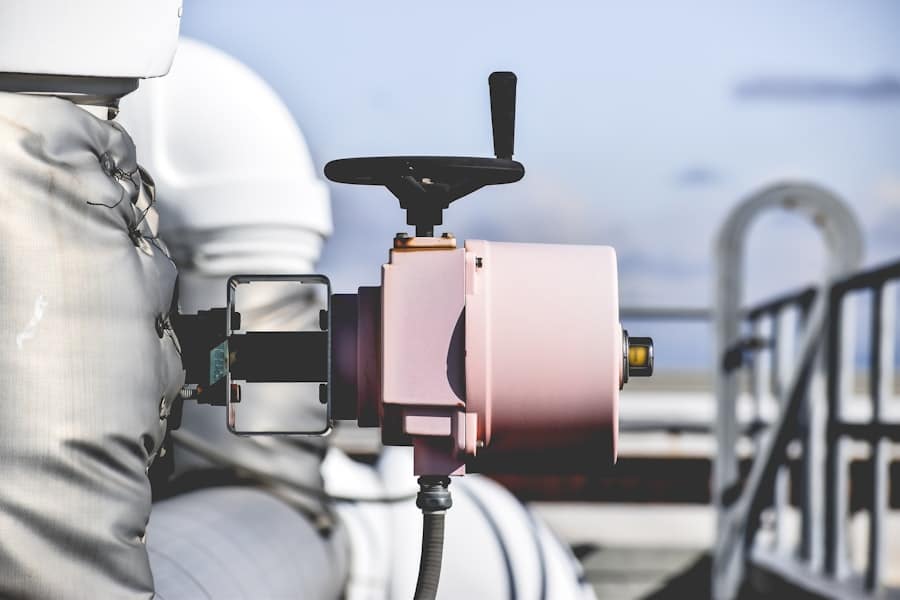Indoor air quality (IAQ) has emerged as a critical concern in both residential and commercial environments, primarily due to its profound impact on health and well-being. Poor indoor air quality can lead to a range of health issues, including respiratory problems, allergies, and even chronic diseases. According to the World Health Organization (WHO), indoor air pollution is responsible for millions of premature deaths each year, highlighting the urgent need for effective monitoring and management strategies.
The significance of IAQ monitoring extends beyond health; it also affects productivity, cognitive function, and overall comfort levels within indoor spaces. For instance, studies have shown that improved air quality can enhance employee performance and reduce absenteeism in workplaces. Moreover, the growing awareness of environmental sustainability has prompted a shift towards healthier indoor environments.
As buildings become more energy-efficient, they often rely on sealed structures that can trap pollutants and moisture, exacerbating air quality issues. This makes continuous monitoring essential to ensure that ventilation systems are functioning optimally and that harmful substances are kept at bay. By implementing robust IAQ monitoring systems, stakeholders can not only comply with health regulations but also create healthier living and working conditions that promote well-being and productivity.
Key Takeaways
- Indoor air quality monitoring is crucial for maintaining a healthy and safe indoor environment for occupants.
- IoT sensors play a significant role in indoor air quality monitoring by providing real-time data on various air pollutants and environmental conditions.
- Using IoT sensors for indoor air quality monitoring offers advantages such as cost-effectiveness, accessibility, and the ability to track air quality trends over time.
- Common types of IoT sensors used for indoor air quality monitoring include carbon dioxide sensors, particulate matter sensors, volatile organic compound sensors, and temperature and humidity sensors.
- IoT sensors collect and analyze data through continuous monitoring of air pollutants and environmental conditions, providing valuable insights for effective indoor air quality management.
The Role of IoT Sensors in Indoor Air Quality Monitoring
The advent of the Internet of Things (IoT) has revolutionized various sectors, including indoor air quality monitoring. IoT sensors play a pivotal role in this transformation by providing real-time data on various air quality parameters such as particulate matter (PM), volatile organic compounds (VOCs), carbon dioxide (CO2), and humidity levels. These sensors are capable of continuously collecting data, which can be analyzed to identify trends and anomalies in air quality.
The integration of IoT technology allows for a more proactive approach to managing indoor environments, enabling facility managers and homeowners to take immediate action when air quality deteriorates. IoT sensors facilitate a networked approach to air quality monitoring, where multiple devices communicate with each other and central systems.
For example, in a large office complex, sensors placed in various rooms can relay information about localized air quality issues, enabling targeted interventions such as adjusting ventilation or deploying air purifiers. This level of granularity in monitoring is crucial for maintaining optimal air quality standards and ensuring the health and comfort of occupants.
Advantages of Using IoT Sensors for Indoor Air Quality Monitoring
The advantages of utilizing IoT sensors for indoor air quality monitoring are manifold. One of the most significant benefits is the ability to gather real-time data, which allows for immediate responses to changes in air quality. Traditional monitoring methods often rely on periodic assessments that may miss transient spikes in pollutants or other harmful substances.
In contrast, IoT sensors provide continuous monitoring, ensuring that any deviations from acceptable air quality levels are promptly detected and addressed. Another advantage is the scalability of IoT sensor networks. Organizations can start with a few sensors in critical areas and gradually expand their monitoring capabilities as needed.
This flexibility makes it feasible for both small businesses and large enterprises to implement effective IAQ monitoring solutions without incurring prohibitive costs upfront. Additionally, the data collected by these sensors can be integrated with building management systems (BMS) to automate responses based on predefined thresholds. For instance, if CO2 levels exceed a certain limit, the ventilation system can automatically increase airflow to mitigate the issue, thereby enhancing overall indoor air quality.
Types of IoT Sensors Used for Indoor Air Quality Monitoring
A variety of IoT sensors are employed for indoor air quality monitoring, each designed to measure specific pollutants or environmental conditions. One common type is the particulate matter sensor, which detects airborne particles such as dust, smoke, and allergens. These sensors are crucial for identifying sources of pollution within indoor spaces and can help mitigate health risks associated with particulate exposure.
Another important category is gas sensors, which measure concentrations of harmful gases like carbon dioxide (CO2), carbon monoxide (CO), and volatile organic compounds (VOCs). CO2 sensors are particularly valuable in settings like classrooms or conference rooms where occupancy levels fluctuate; elevated CO2 levels can indicate inadequate ventilation. VOC sensors are essential for detecting chemical emissions from building materials, cleaning products, and furnishings that can contribute to poor indoor air quality.
Humidity sensors also play a vital role in IAQ monitoring by measuring moisture levels in the air. High humidity can lead to mold growth and other moisture-related issues, while low humidity can cause discomfort and respiratory problems. By integrating these various types of sensors into a cohesive monitoring system, organizations can gain a comprehensive understanding of their indoor air quality landscape.
How IoT Sensors Collect and Analyze Data for Indoor Air Quality Monitoring
IoT sensors collect data through various mechanisms depending on their design and purpose. Most commonly, these sensors utilize electrochemical or optical methods to detect specific pollutants. For instance, electrochemical sensors are often used for gas detection due to their sensitivity and accuracy; they work by measuring changes in electrical current caused by the presence of target gases.
Optical sensors, on the other hand, use light scattering techniques to quantify particulate matter in the air. Once data is collected, it is transmitted to cloud-based platforms or local servers for analysis. This data processing typically involves filtering out noise and calibrating readings to ensure accuracy.
Advanced algorithms can then analyze the data to identify patterns or anomalies that may indicate deteriorating air quality conditions. For example, machine learning techniques can be employed to predict future air quality trends based on historical data, allowing for proactive management strategies.
These dashboards often include alerts and notifications that inform users when specific thresholds are breached, enabling timely interventions. By leveraging data analytics in conjunction with IoT technology, organizations can make informed decisions regarding ventilation adjustments, air purification measures, and other strategies aimed at improving indoor air quality.
Implementing IoT Sensors for Effective Indoor Air Quality Management
Identifying Key Areas for Monitoring
The first step involves identifying key areas within a building where monitoring is essential. High-traffic zones such as lobbies, conference rooms, and break areas typically warrant closer scrutiny due to their potential for elevated pollutant levels.
Selecting and Installing Sensors
Once these areas are identified, organizations must select appropriate sensor types based on the specific pollutants they wish to monitor. After installation, it is crucial to establish a baseline for normal air quality conditions within the monitored spaces. This baseline will serve as a reference point against which future measurements can be compared.
Maintenance and Response Protocols
Regular calibration of sensors is also necessary to maintain accuracy over time; environmental factors such as temperature and humidity can affect sensor performance. Training staff on how to interpret data from the monitoring system is another vital aspect of successful implementation. Users should understand how to respond to alerts and notifications generated by the system effectively. Additionally, organizations should develop protocols for addressing identified air quality issues—whether through increased ventilation, deploying air purifiers, or conducting thorough cleaning routines—to ensure that proactive measures are taken when necessary.
Challenges and Limitations of Using IoT Sensors for Indoor Air Quality Monitoring
Despite their numerous advantages, the use of IoT sensors for indoor air quality monitoring is not without challenges and limitations. One significant concern is sensor accuracy; while many modern sensors offer impressive precision, variations in environmental conditions can lead to discrepancies in readings. Factors such as temperature fluctuations or interference from other gases can affect sensor performance, necessitating regular calibration and maintenance.
Another challenge lies in data management and analysis. The sheer volume of data generated by multiple sensors can be overwhelming for organizations lacking robust data analytics capabilities. Without effective data management strategies in place, valuable insights may be lost amidst the noise of irrelevant information.
Additionally, integrating sensor data with existing building management systems can pose technical challenges that require specialized expertise. Privacy concerns also arise when implementing IoT technologies in indoor environments. Continuous monitoring may raise apprehensions among occupants regarding surveillance or data misuse.
Organizations must address these concerns transparently by clearly communicating how data will be used and ensuring compliance with relevant privacy regulations.
Future Trends in IoT Sensor Technology for Indoor Air Quality Monitoring
The future of IoT sensor technology for indoor air quality monitoring is poised for significant advancements driven by ongoing research and development efforts. One emerging trend is the integration of artificial intelligence (AI) with IoT sensor networks. AI algorithms can enhance data analysis capabilities by identifying complex patterns that may not be immediately apparent through traditional analytical methods.
This could lead to more accurate predictions regarding air quality fluctuations based on occupancy patterns or external environmental conditions. Another promising development is the miniaturization of sensor technology, which allows for more compact devices that can be easily deployed throughout various spaces without compromising performance. These smaller sensors could enable more granular monitoring capabilities within buildings, providing insights at an unprecedented level of detail.
Furthermore, advancements in energy harvesting technologies may lead to self-sustaining sensors that do not require external power sources. This would simplify installation processes and reduce maintenance requirements significantly. As sustainability becomes increasingly important across industries, such innovations will align with broader goals of reducing energy consumption while maintaining high standards of indoor air quality.
In conclusion, the evolution of IoT sensor technology holds great promise for enhancing indoor air quality monitoring practices across diverse settings. By leveraging these advancements effectively, organizations can create healthier environments that prioritize occupant well-being while addressing pressing environmental concerns.
If you are interested in how emerging technologies are impacting various industries, you may want to check out this article from enicomp.com. The article discusses the latest advancements in technology and how they are shaping the future of different sectors. It complements the discussion on IoT sensors improving indoor air quality monitoring by providing a broader perspective on the role of technology in our daily lives.
FAQs
What are IoT sensors?
IoT sensors are devices that can collect and transmit data over the internet. They are often used to monitor and measure various environmental factors, such as temperature, humidity, air quality, and more.
How do IoT sensors improve indoor air quality monitoring?
IoT sensors can continuously monitor indoor air quality parameters such as carbon dioxide levels, volatile organic compounds, particulate matter, and temperature. This real-time data allows for better understanding of indoor air quality and enables timely interventions to improve it.
What are the benefits of using IoT sensors for indoor air quality monitoring?
Using IoT sensors for indoor air quality monitoring allows for more accurate and comprehensive data collection. This can lead to better insights into air quality trends, identification of potential issues, and the ability to take proactive measures to improve indoor air quality.
How do IoT sensors contribute to a healthier indoor environment?
By providing real-time data on indoor air quality, IoT sensors enable building managers and occupants to make informed decisions about ventilation, air filtration, and other measures to improve indoor air quality. This can lead to a healthier and more comfortable indoor environment.
What are some common applications of IoT sensors in indoor air quality monitoring?
IoT sensors are commonly used in buildings, offices, schools, and homes to monitor indoor air quality. They can also be integrated into HVAC systems to optimize ventilation and air quality control. Additionally, IoT sensors are used in industrial settings to monitor air quality in manufacturing facilities.



